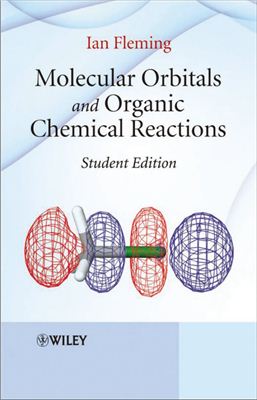Wiley, 2009. - 378 p. - Acknowledging the very best in professional
and scholarly publishing, the annual PROSE Awards recognise
publishers' and authors' commitment to pioneering works of research
and for contributing to the conception, production, and design of
landmark works in their fields. Judged by peer publishers,
librarians, and medical professionals, Wiley are pleased to
congratulate Professor Ian Fleming, winner of the PROSE Award in
Chemistry and Physics for Molecular Orbitals and Organic Chemical
Reactions.
Molecular orbital theory is used by chemists to describe the arrangement of electrons in chemical structures. It is also a theory capable of giving some insight into the forces involved in the making and breaking of chemical bonds—the chemical reactions that are often the focus of an organic chemist's interest. Organic chemists with a serious interest in understanding and explaining their work usually express their ideas in molecular orbital terms, so much so that it is now an essential component of every organic chemist's skills to have some acquaintance with molecular orbital theory.
Molecular Orbitals and Organic Chemical Reactions is both a simplified account of molecular orbital theory and a review of its applications in organic chemistry; it provides a basic introduction to the subject and a wealth of illustrative examples. In this book molecular orbital theory is presented in a much simplified, and entirely non-mathematical language, accessible to every organic chemist, whether student or research worker, whether mathematically competent or not.
Topics covered include:
Molecular Orbital Theory
Molecular Orbitals and the Structures of Organic Molecules
Chemical Reactions — How Far and How Fast
Ionic Reactions — Reactivity
Ionic Reactions — Stereochemistry
Pericyclic Reactions
Radical Reactions
Photochemical Reactions
Molecular orbital theory is used by chemists to describe the arrangement of electrons in chemical structures. It is also a theory capable of giving some insight into the forces involved in the making and breaking of chemical bonds—the chemical reactions that are often the focus of an organic chemist's interest. Organic chemists with a serious interest in understanding and explaining their work usually express their ideas in molecular orbital terms, so much so that it is now an essential component of every organic chemist's skills to have some acquaintance with molecular orbital theory.
Molecular Orbitals and Organic Chemical Reactions is both a simplified account of molecular orbital theory and a review of its applications in organic chemistry; it provides a basic introduction to the subject and a wealth of illustrative examples. In this book molecular orbital theory is presented in a much simplified, and entirely non-mathematical language, accessible to every organic chemist, whether student or research worker, whether mathematically competent or not.
Topics covered include:
Molecular Orbital Theory
Molecular Orbitals and the Structures of Organic Molecules
Chemical Reactions — How Far and How Fast
Ionic Reactions — Reactivity
Ionic Reactions — Stereochemistry
Pericyclic Reactions
Radical Reactions
Photochemical Reactions

